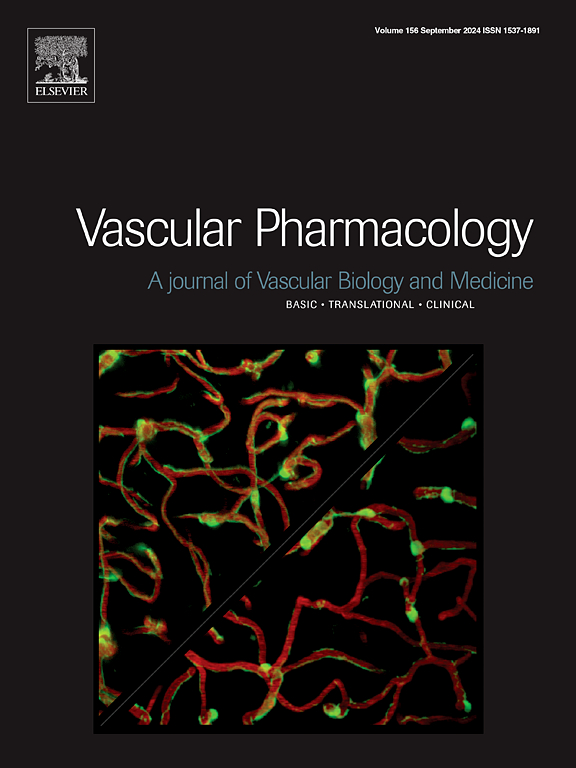TNAP expressing adventitial pericytes contribute to myogenesis during foetal development
IF 3.5
3区 医学
Q2 PHARMACOLOGY & PHARMACY
引用次数: 0
Abstract
Objective
During growth and differentiation of skeletal muscle, cell types other than canonical myoblasts can be recruited to a myogenic fate. Among these, TNAP+ pericytes can differentiate into skeletal or smooth muscle cells during postnatal growth and contribute to muscle regeneration. However, their role in muscle development has not been investigated. This study aims to characterise pericyte fate choices during embryonic and foetal myogenesis, occurring in the second half of gestation.
Approach and results
Using Cre-loxP lineage tracing with multiple reporters including the multifluorescent Confetti, we labelled TNAP+ precursors in vivo and assessed the smooth or skeletal muscle differentiation in their lineage at a perinatal stage. We found that TNAP+ cells contribute in vivo to skeletal and smooth muscle cells, as well as other pericytes, also during pre-natal muscle development. The resulting clones showed that such fate choices are likely to depend on distinct unipotent progenitors rather than multipotent progenitors. In addition, we isolated and differentiated in vitro foetal cells derived from TNAP+ precursors, which showed that they are not spontaneously myogenic unless co-cultured with other skeletal muscle cells.
Conclusions
This work extends our understanding of the differentiative potency of these non- canonical skeletal muscle progenitors during prenatal life, with a view to a future application of this knowledge to optimise cell therapies for muscle wasting disorders.

表达外周细胞的TNAP有助于胎儿发育过程中的肌肉发生。
目的:在骨骼肌的生长和分化过程中,除典型成肌细胞外,其他类型的细胞也可以被募集到成肌的过程中。其中,TNAP+周细胞可以在出生后的生长过程中分化为骨骼肌或平滑肌细胞,并有助于肌肉再生。然而,它们在肌肉发育中的作用尚未被研究。本研究的目的是表征周细胞命运的选择在胚胎和胎儿的肌肉发生,发生在妊娠的后半段。方法和结果:使用Cre-loxP谱系追踪,包括多荧光contfetti,我们在体内标记TNAP+前体,并评估其在围产期谱系中的平滑肌或骨骼肌分化。我们发现TNAP+细胞在体内对骨骼和平滑肌细胞以及其他周细胞有贡献,也在产前肌肉发育期间。由此产生的克隆表明,这种命运的选择很可能取决于不同的单能祖细胞,而不是多能祖细胞。此外,我们在体外分离并分化了来自TNAP+前体的胎儿细胞,结果表明,除非与其他骨骼肌细胞共培养,否则它们不会自发形成肌。结论:这项工作扩展了我们对这些非典型骨骼肌祖细胞在产前生活中的分化能力的理解,以期在未来应用这一知识来优化肌肉萎缩疾病的细胞疗法。
本文章由计算机程序翻译,如有差异,请以英文原文为准。
求助全文
约1分钟内获得全文
求助全文
来源期刊

Vascular pharmacology
医学-药学
CiteScore
6.60
自引率
2.50%
发文量
153
审稿时长
31 days
期刊介绍:
Vascular Pharmacology publishes papers, which contains results of all aspects of biology and pharmacology of the vascular system.
Papers are encouraged in basic, translational and clinical aspects of Vascular Biology and Pharmacology, utilizing approaches ranging from molecular biology to integrative physiology. All papers are in English.
The Journal publishes review articles which include vascular aspects of thrombosis, inflammation, cell signalling, atherosclerosis, and lipid metabolism.
 求助内容:
求助内容: 应助结果提醒方式:
应助结果提醒方式:


